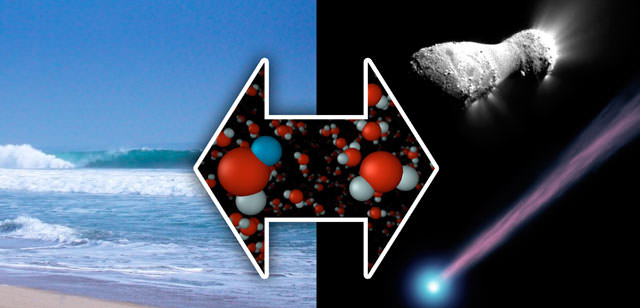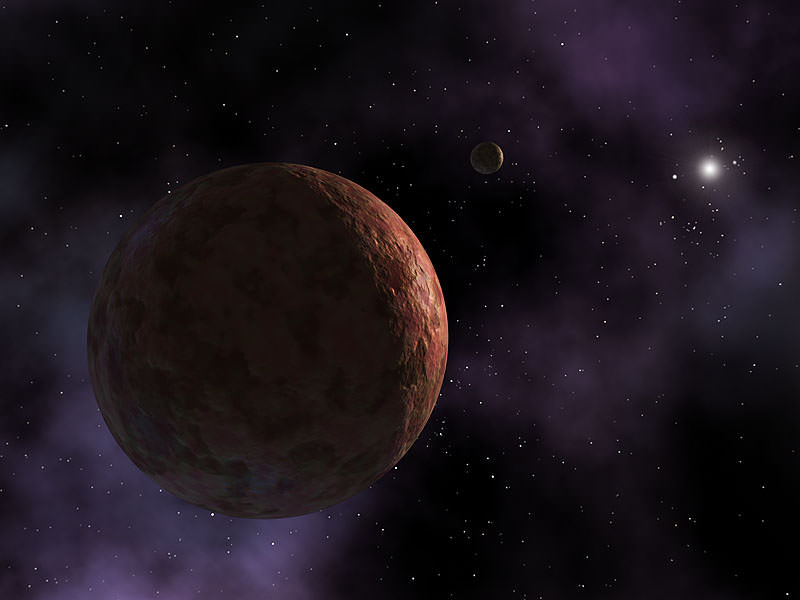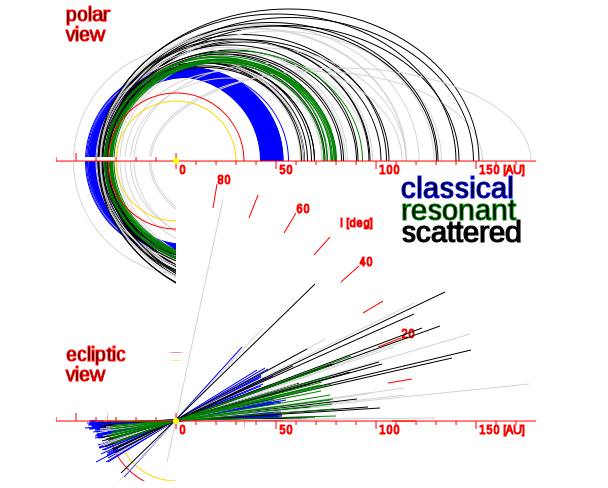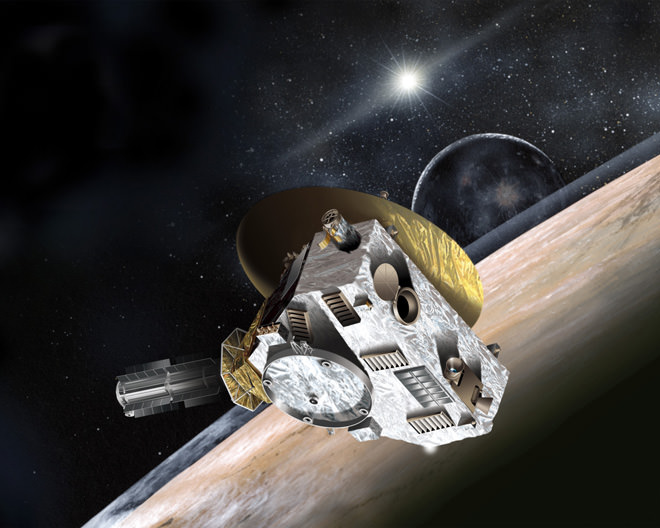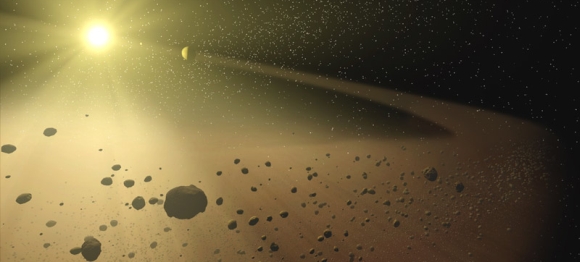[/caption]
The idea isn’t new that Earth’s oceans originated from comets bombarding our planet back in its early days. But astronomers have now found the best evidence yet for this scenario. The Herschel infrared space observatory detected that comet Hartley 2, which originates from the distant Kuiper Belt, contains water with the same chemical signature as Earth’s oceans.
“Our results with Herschel suggest that comets could have played a major role in bringing vast amounts of water to an early Earth,” said Dariusz Lis, senior research associate in physics at the California Institute of Technology in Pasadena and co-author of a new paper in the journal Nature, published online on Oct. 5. “This finding substantially expands the reservoir of Earth ocean-like water in the solar system to now include icy bodies originating in the Kuiper Belt.”
Previous looks at various other comets showed water content different from Earth, with deuterium levels around twice that of Earth’s oceans, but those comets came from the Oort Cloud. Scientists theorized that if comets of this kind had collided with Earth, they could not have contributed more than a few percent of Earth’s water.
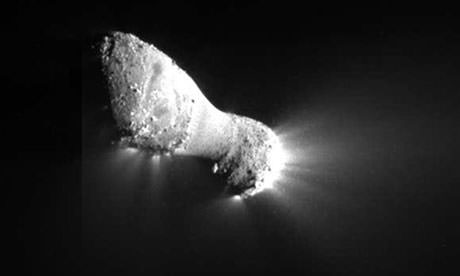
But Herschel’s observations of Hartley 2 are the first in-depth look at water in a comet from the Kuiper Belt — home of icy, rocky bodies that includes dwarf planets and innumerable comets — and it showed a surprising difference.
Using HIFI, a highly sensitive infrared spectrometer, Herschel peered into the comet’s coma, or thin, gaseous atmosphere, and found that Hartley 2 possessed half as much “heavy water” as other comets analyzed to date. In heavy water, one of the two normal hydrogen atoms has been replaced by the heavy hydrogen isotope known as deuterium. The ratio between heavy water and light, or regular, water in Hartley 2 is the same as the water on Earth’s surface.
“Comet Hartley’s deuterium-to-hydrogen ratio is almost exactly the same as the water in Earth’s oceans,” says Paul Hartogh, Max-Planck-Institut für Sonnensystemforschung, Katlenburg-Lindau, Germany, who led the international team of astronomers in this study.
The amount of heavy water in a comet is related to the environment where the comet formed, and by comparing the deuterium to hydrogen ratio found in the water in Earth’s oceans with that in extraterrestrial objects, astronomers were hoping to identify the origin of our water.
Astronomers know Hartley 2 comes from the Kuiper Belt, since they can track its path as it swoops into Earth’s neighborhood in the inner solar system every six-and-a-`half years. The five comets besides Hartley 2 whose heavy-water-to-regular-water ratios have been obtained all came from the Oort Cloud, an even more distant region in the solar system. This region is 10,000 times farther away than the Kuiper Belt, and is home to the most documented comets.
The team is now using Herschel to look at other Kuiper Belt comets to see whether they, too, carry the same type of water.
“Thanks to this detection made possible by Herschel, an old, very interesting discussion will be revived and invigorated,” said Göran Pilbratt, ESA Herschel Project Scientist. “It will be exciting to see where this discovery will take us.”
Paper: “Ocean-like Water in the Jupiter-family Comet 103P Hartley”

